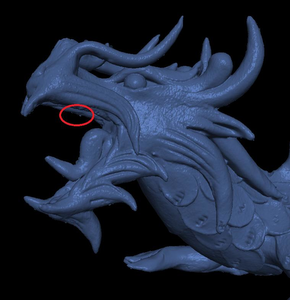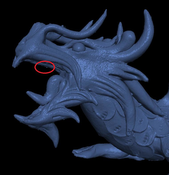Information
- Publication Type: Bachelor Thesis
- Workgroup(s)/Project(s):
- Date: April 2016
- Date (Start): 5. March 2014
- Date (End): 30. June 2014
- Matrikelnummer: e1027470
- First Supervisor: Stefan Ohrhallinger
- Second Supervisor: Stefan Ohrhallinger
- Keywords: cuda, gpu, nearest neighbor search, knn, screen space
Abstract
Virtualization of realworld objects and scenes became very popular in recent years due to af- fordable laser-scanning technology. Nowadays it’s not only possible to capture static frames but also realtime frame sequences. Rendering of those captures is difficult because visually ap- pealing renderings involve the computation of local surface reconstruction from pointclouds and therefore a lot of preprocessing. This is usually not possible in realtime. One important processing step is the computation of nearest neighbours for each 3d-point. The neighbourhood information is not only used for normal reconstruction and local surface estimation, but can also be utilized for collision detection. In this paper we present a method for computing the k-nearest-neighbor sets for pointclouds in realtime. To achieve high frame rates we parallelize the algorithm on the GPU, using the Nvidia CUDA parallel computation framework. Furthermore computations are limited to op- erate in screen-space, to reduce computational complexity even further, and effectively prevent rendering invisible geometry. We also utilize the invented FastKnn algorithm to estimate local surface reconstruction for splat rendering of pointclouds in realtime and show how it compares to a state of the art algorithm.Additional Files and Images
Weblinks
BibTeX
@bachelorsthesis{schoerkhuber_dominik-2016-baa,
title = "Fast KNN in Screenspace on GPGPU",
author = "Dominik Sch\"{o}rkhuber",
year = "2016",
abstract = "Virtualization of realworld objects and scenes became very
popular in recent years due to af- fordable laser-scanning
technology. Nowadays it’s not only possible to capture
static frames but also realtime frame sequences. Rendering
of those captures is difficult because visually ap- pealing
renderings involve the computation of local surface
reconstruction from pointclouds and therefore a lot of
preprocessing. This is usually not possible in realtime. One
important processing step is the computation of nearest
neighbours for each 3d-point. The neighbourhood information
is not only used for normal reconstruction and local surface
estimation, but can also be utilized for collision
detection. In this paper we present a method for computing
the k-nearest-neighbor sets for pointclouds in realtime. To
achieve high frame rates we parallelize the algorithm on the
GPU, using the Nvidia CUDA parallel computation framework.
Furthermore computations are limited to op- erate in
screen-space, to reduce computational complexity even
further, and effectively prevent rendering invisible
geometry. We also utilize the invented FastKnn algorithm to
estimate local surface reconstruction for splat rendering of
pointclouds in realtime and show how it compares to a state
of the art algorithm.",
month = apr,
address = "Favoritenstrasse 9-11/E193-02, A-1040 Vienna, Austria",
school = "Institute of Computer Graphics and Algorithms, Vienna
University of Technology ",
keywords = "cuda, gpu, nearest neighbor search, knn, screen space",
URL = "https://www.cg.tuwien.ac.at/research/publications/2016/schoerkhuber_dominik-2016-baa/",
}

 thesis
thesis

